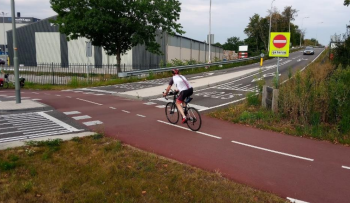
Decarbonising urban transport – hop onto two wheels!
ECF recently responded to the European Commission’s public consultation on the Effort Sharing Decision (ESD) for 2021-2030. The ESD is a system of targets for EU Member States to reduce greenhouse gas emissions in mainly three sectors – transport, buildings and agriculture – which together account for 60% of all emissions. The ESD sets different targets for individual Member States based on their GDP per capita, which all add up to an overall (current) target of 10% reduction from 2005 levels by 2020. These targets are translated into an annual emissions budget, from which a Member State may use flexibilities in meeting its target. These flexibilities, totalling seven in number, include banking (to carry over the budget of one year into a future year), borrowing (to borrow up to 5% of its entitlements from future years), and trading (transfer of own annual entitlements to another Member State). Transport is the largest sector in the ESD (34% of all GHG emissions), and in tune with the ECF goals for decarbonisation (more, sooner, faster), we propose fewer (and less ease of use for) flexibility options under the ESD. ECF believes that in order to attain the climate targets of 2030 (the lack of ambitions for which are elaborated on separately hereunder), more concrete actions are needed for emissions reduction in the transport sector. A mere reliance on flexibilities, which while useful for many EU Member States with lower GDPs per capita, can serve to slow down or delay the meeting of the targets, if not resulting in an outright escapist approach to the same.
The individual themes in the consultation were responded to thus:
On flexibilities:
Given the uncertainty of Member States in meeting the set annual emissions targets, flexibilities are indeed a useful mechanism to facilitate more cost-effective emissions reductions. ECF believes, however, that the 2030 framework ignores the obstructive and even counterproductive effects that a reliance on a host of flexibilities has on achieving the set targets. ECF maintains that these flexibilities may serve as loopholes for Member States to ignore more concrete policies to meet the set reduction targets, and instead foster an escapist reliance on these flexibilities. ECF maintains that such concrete actions should be enacted in parallel with the use of these flexibilities; an emphasis on cost-effectiveness should not overshadow the attainment of the climate goals.
On reporting, monitoring and corrective actions:
Annual reporting and compliance checks are an effective tool to measure and monitor the progress of Member States in meeting their targets. ECF maintains that the EU should consider the use of the semester process to steer member states towards better national policy making. Member states that follow the EU recommendations and take concrete structural measures in meeting the 2030 goals could be granted additional time or reduced penalties. Member States that do not follow the Commission recommendations could also be refused access to existing flexibility mechanism.
On ESD targets for individual Member States:
As a continuation of the ECF perspective on flexibilities above, it is reiterated that the GDP-per-capita criterion for determining individual Member State emissions targets creates an imbalance, and that said imbalance in theory has only produced positive results for about half the member states. In order to achieve cost-effective energy savings targets by the end-user (mainly from the transport sector), any of the flexibility options, which provide 1/6th of the reductions attainable by the former, should be dis-incentivized.
On the scope of EU actions other than ESD:
ECF proposes a modal shift in the transport sector to more fuel-efficient and hence greener transport, the introduction of more intelligent systems, reforms in national tax systems that abolish subsidies for CO2-intensive modes of transport and setting more fiscal incentives for sustainable modes like cycling, and enhanced CO2 standards (more stringent, introduced at the earliest, and more frequently updated).
Of all transport, 25% is of the urban variety and also the most conveniently substitutable. In most Member States, about half of all car journeys cover distances of less than 5 km, which is an ideal cycling distance. Moreover, emission reductions in ESD sectors need to be encouraged through all applicable EU policies. For example, there still is large room for improvement in the European Semester process concerning the inclusion of fiscal measures to incentivize emission reductions, also in the transport sector. In its country-specific recommendations, the European Commission should put more emphasis on the reduction of subsidies for emission-intensive sectors, e.g. regarding company cars, and on the introduction of fiscal incentives for low-carbon modes of transport like walking, cycling or public transport. ECF is continuously involved with the EU policy for the decarbonisation of road transport, and especially what concerns urban mobility. With regards to the latter, the ECF focuses on local and regional governments, in order to develop, promote and aid a network of smart cities. ECF strongly maintains that a modal shift to more cycling in urban centres is a necessary first step in creating said smart cities.
About the author Khuram Parvez is a policy assistant at ECF, and works on increasing the role of cycling in EU transport policies.
- Log in to post comments
Contact the author
Recent news!
Contact Us
Avenue des Arts, 7-8
Postal address: Rue de la Charité, 22
1210 Brussels, Belgium










